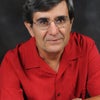On May 26, 2013, a friend and I ventured into the alien world of the Imperial Valley of California where "farming" engulfs the Salton Sea. In the bright hot sun I struggled to make sense of endless stretches of arid land peppered by huge green fields irrigated by subsidized and imported water.
I could not see any fences or borders or houses anywhere. Ditches sliced the infinite land. I felt disoriented. And knowing that the toxic waste of the Imperial Valley ends in the Salton Sea where it poisons thousands of birds did not make matters any better.
That's not how one thinks of agriculture: the mean-spirited empty land of the Imperial Valley. Farming in America started small for families and small prosperous rural towns.
War changed all that, making possible the model of Imperial Valley.
The early 1940s -- a period of war -- sparked both a larger chemical industry and a larger industrialized agriculture. By then, the Germans had discovered nerve gases -- chemical weapons lethal to people. After World War II, the nerve gas weapons moved to the armory of large farms all over the world.
Nerve gases kill men and insects in the same manner -- by suffocation.
War is the conquest of a society by another through the killing of many men; the chemical weapons of the farmer wage a war against insects, unwanted plants (deceptively called weeds), birds, and other forms of wildlife farmers find troublesome.
It was DDT, however, that was the granddaddy of the farmers' agrotoxics. It came into being in 1939 when Paul Hermann Müller, a chemist working for the Swiss company, J. R. Geigy, discovered DDT's killing power against insects.
The military did not use nerve gases during WWII, but it used DDT to control a typhus epidemic in Italy in 1943 and 1944. Soon thereafter, DDT became the Western man's golden bullet for the control of nature.
Industrialized farmers and malaria workers made DDT a global spray with nearly miraculous effects. So much was DDT at the center of the exhausted life in the West that it was praised to heavens.
In 1948, Mueller received the Nobel Prize in Physiology and Medicine for his research on DDT.
Yet the Nobel committee learnt nothing from this embarrassing episode. In 1970 it awarded its prestigious prize to an American, Norman Borlaug, an agronomist and an insecticide man of the Rockefeller Foundation who sparked Mexico's destructive conversion to the agribusiness farming of the United States.
Post-World War II countries have been in love with poisons. Their agricultural weapons offer simple solutions to complicated biological and social problems.
The appearance of DDT-like weed killers increased public confidence, especially the confidence of farmers, that pests would not have a chance against the new weapons of chemistry. Such confidence, of course, was misplaced. Agricultural pests adjust to the farmers' toxic barrage and evolve into super bugs.
There were more than 540 such super bugs in the United States and the world in 2002. They eat a lot of the farmers' crops, but they are nearly indestructible. Despite the billions of pounds of poisons they spray yearly on their crops, despite the genetic engineers making the crops themselves deleterious to the insects, American farmers lose a third of what they produce to insects and other pests.
In the tropics, farmers hooked on pesticides lose to pests as much as half of the food they produce.
The near simultaneous emergence of the nerve gases for raising food, the planting of hybrid corn, and the farm use of DDT had a lot to do in shaping the science-based agriculture we have today: This is a huge industrial enterprise supported by relatively few crops, a handful of corn-fed meat animals, an ever smaller number of mechanized farmers cultivating larger and larger pieces of land, and chemicals.
The owners of America's very large farms and giant grocery stores like Walmart earn most of the huge amounts of money Americans spend for food.
Large farmers arm themselves with tractors and other technologies so they would control nature itself. In 1953, they commanded tractors that had 15-million horsepower. By 1983 that enormous mechanical power had more than doubled to become 278-million horsepower. From the 1960s to the 1990s, the value of machinery and chemicals increased from 25 to 50 percent of what it takes to farm in the United States.
The costs of this farm industrialization have been high -- to both nature and society. Industrialized farms emit Earth-warming gases. Its toxic wastes fouls streams and rivers and its pesticides compromise the integrity of our food.
The spread of large farms also is impoverishing rural America, forcing small farmers out of business and emptying the countryside of people.
